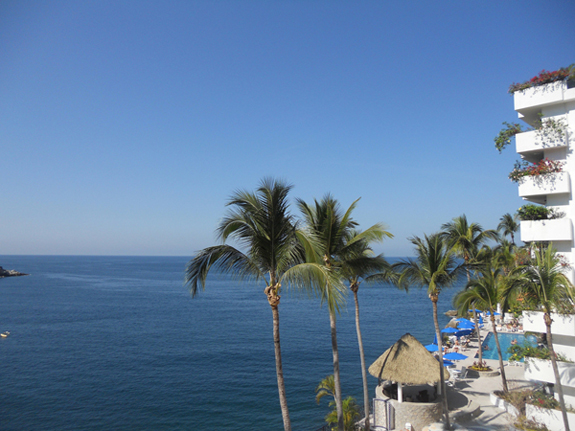

Wu Style Tai-Ji Quan

37-Postures Wu Style Tai-Ji Quan
(1-12)-Postures Tai-Ji Quan --- Begining Course
This sequence of 37-Postures is abridged and rearranged version of the traditional Wu style sequence. This abridged version has been in practice for may years. Currently, in order to help practitioners to perform every movement of the solo posture and to be able to practice well, each of the solo movements is provided with explanation in words as wells figures. Therefore, the 24-Postures which are subdivided into two parts which are provided with two courses (Class I and Class II). People can learn more benefits by consisting proctice of Tai-Ji Quan.
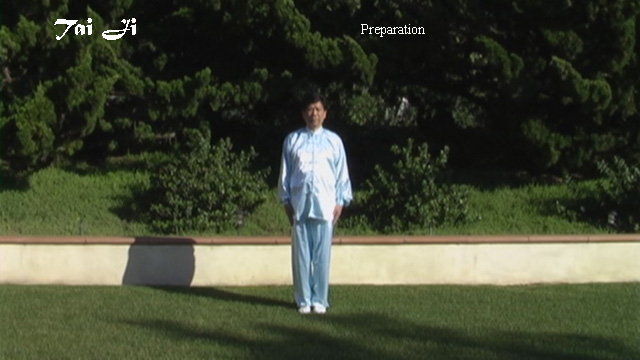
Preparation
Posture: preparation
- Explanation of the posture name:
Before doing the exercise, the physical body and the mind should enter into a state of preparedness.
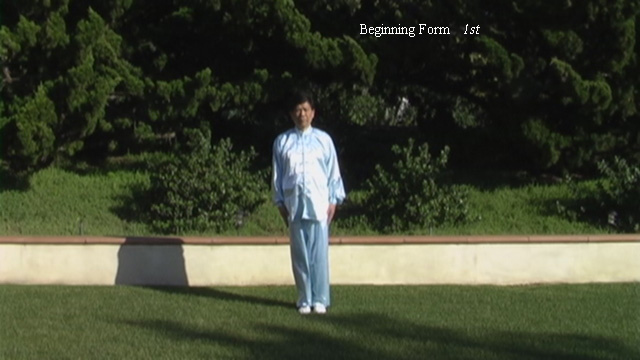
Begininning Form
Posture 1: movement 1st-4th
- Explanation of the posture name:
The initial move of the entire sequence of postures.
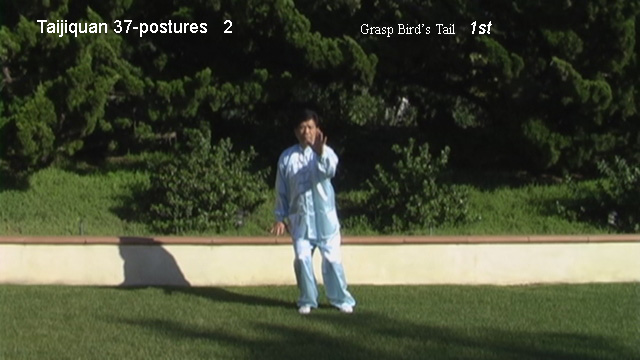
Grasp Bird´s Tail
Posture 2: movement 1st-8th
- Explanation of the posture name:
This is a figure of speech whereby the approaching arm of one’s opponent is likened to a bird’s tail, while one’s own arm is likened to a rope turning up or down, forward or backward, left or right in close pursuit of the bird’s tail, leaving no chance whatever of its getting away.
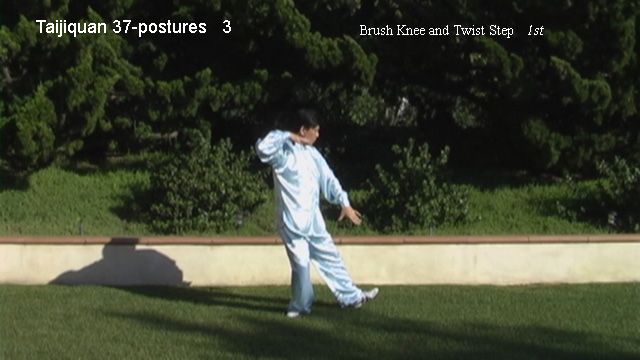
Brush Knee and Twist Step
Posture 3: movement 1st-6th
- Explanation of the posture name:
“Twist step” is a technical term whereby the stepping forward of a foot (for instance, the left foot) is accompanied with the pushing forward of a hand of the opposite side of body (in this case, the right hand), or vice versa. “Bone bu rushing knee” is a technical term whereby one brushes aside, or presses against the approaching part (fist, knee, foot) of the opponent with one hand at the height of one’s knee, and leaves the other hand ready to make a counterattack. “Brush knee and twist step” is a method in Chinese pugilism to neutralize an attack aiming at one’s own lower part, and simultaneously to deliver a counterattack aiming at any upper part of the opponent.
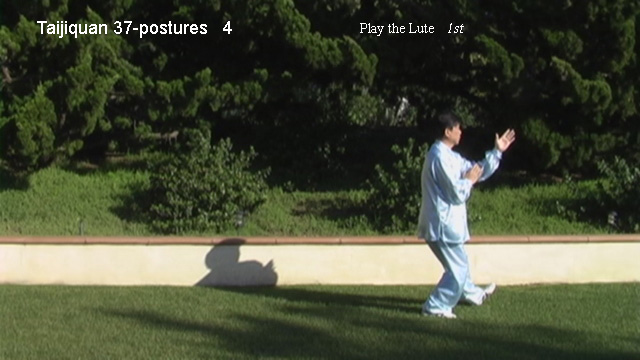
Play the Lute
Posture 4: movement 1st-4th
- Explanation of the posture name:
This posture simulates playing a lute, whereby the two hands, one in the front the other in the rear, turn and move back and forth.
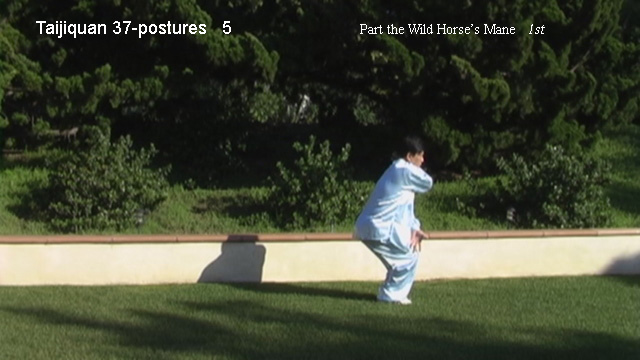
Part the Wild Horse´s Mane
Posture 5: movement 1st-4th
- Explanation of the posture name:
This posture simulates the tossing of the mane of a galloping horse. One’s torso is likened to the horse head and limbs to horsemane. The sway of one’s arms in correlation with the back and forth movement of the legs are likened to the tossing of the mane of a galloping wild horse.
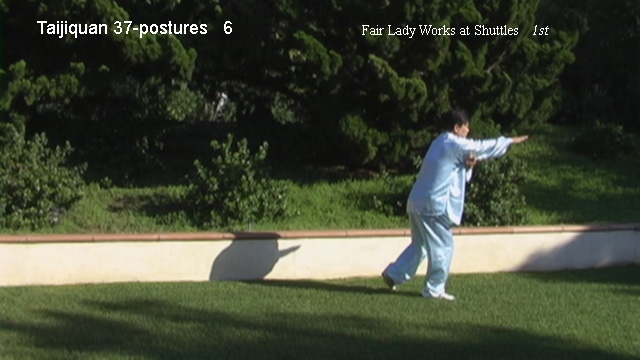
Fair Lady Works at Shuttles
Posture 6: movement 1st-20th
- Explanation of the posture name:
This posture includes a number of back and forth, to and fro movements which are inter-woven and recurrent at the four corners. If performed properly they reveal the inherent pliability and exquisite nimbleness of Taijiquan. This posture is therefore likened to a fair lady working at shuttles.
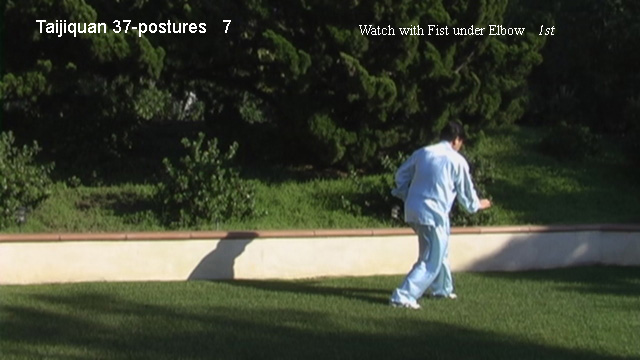
Watch with Fist under Elbow
Posture 7: movement 1st-2nd
- Explanation of the posture name:
This is a technical term. In this posture the two hands are clenched into light fists, the one under the elbow is the main force and the upper one serves as offensive factor, and as advance guard as well. Therefore, both fists are on the watch.
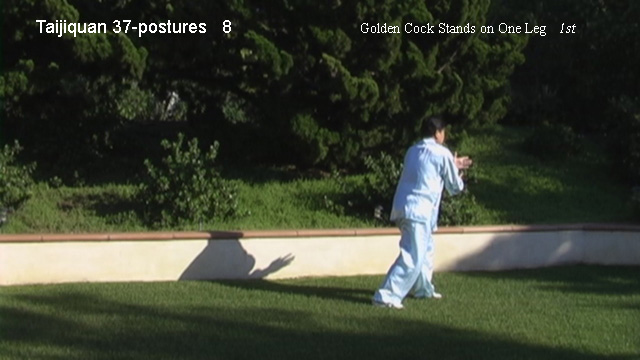
Golden Cock Stands on Ome Leg
Posture 8: movement 1st-4th
- Explanation of the posture name:
Your weight is supported by one leg, while the other leg is suspended at its knee, This posture resembles a cock standing on one leg.
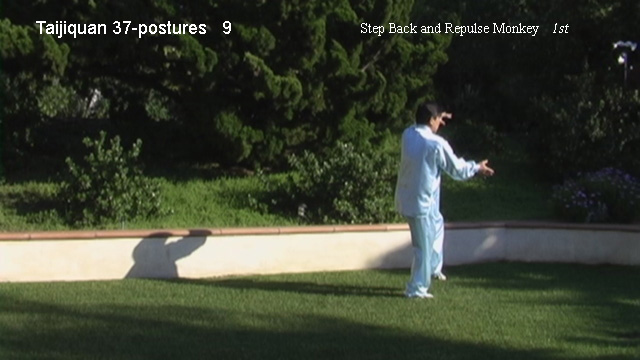
Step Back and Repulse Monkey
Posture 9: movement 1st-10th
- Explanation of the posture name:
This is to advance in form of retreat. The opponent’s straight forward offensive force is neutralized by setting it sideways or wavering and thus be repulsed. And you could be the pursuing party.
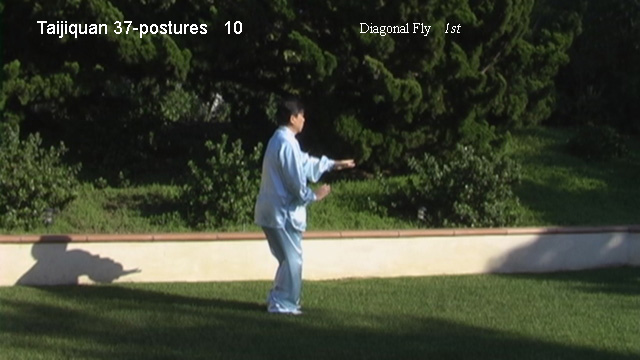
Diagonal Fly
Posture 10: movement 1st-4th
- Explanation of the posture name:
Here the spreading and contracting, or the opening and closing of one’s two arms are likened to a big roc spreading its wings as it flies diagonally through the vast sky.
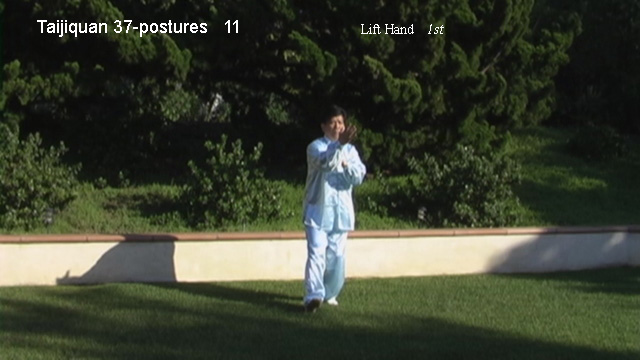
Lift Hand
Posture 11: movement 1st-4th
- Explanation of the posture name:
A hand is raised as if lifting some object.
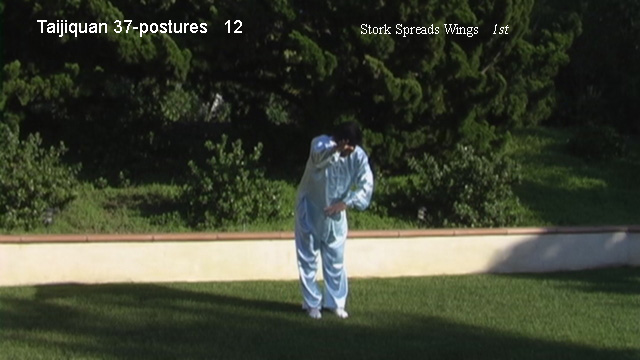
Stork Spreads Wings
Posture 12: movement 1st-4th
- Explanation of the posture name:
This posture imitates the stork spreading its wings in joy, thus to function in promoting health as well as in combating an opponent.